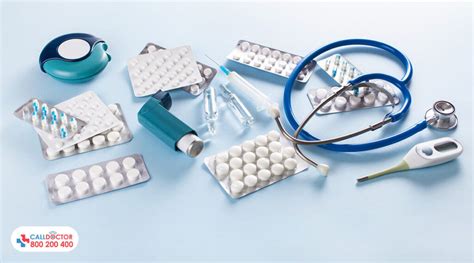Intro
Maintaining healthy blood glucose levels is crucial for overall well-being, as fluctuations can lead to various health issues, including diabetes, heart disease, and stroke. For individuals with low blood glucose, or hypoglycemia, it's essential to know how to increase their blood sugar levels quickly and safely. On the other hand, those with high blood glucose, or hyperglycemia, need to manage their levels to prevent complications. In this article, we'll explore five ways to increase blood glucose levels, discuss the importance of glucose monitoring, and provide tips for managing blood sugar fluctuations.
The human body relies heavily on glucose as a primary source of energy, and maintaining stable blood glucose levels is vital for proper bodily functions. When blood glucose levels drop, the body may experience symptoms such as dizziness, shakiness, sweating, and confusion. In severe cases, low blood glucose can lead to loss of consciousness, seizures, or even death. Therefore, it's crucial to recognize the signs of low blood glucose and take immediate action to increase glucose levels.
Blood glucose management is a delicate balance, and several factors can influence glucose levels, including diet, physical activity, stress, and medication. For individuals with diabetes, managing blood glucose levels is a daily challenge, and understanding how to increase or decrease glucose levels can help prevent complications. In the following sections, we'll delve into five ways to increase blood glucose levels, including dietary changes, glucose supplements, and lifestyle modifications.
Understanding Blood Glucose Levels

Before we dive into the ways to increase blood glucose levels, it's essential to understand how glucose monitoring works and what the different glucose levels mean. Normal blood glucose levels typically range from 70 to 140 mg/dL, although these values can vary depending on the individual and their health status. Fasting blood glucose levels, which are measured after an overnight fast, should be below 100 mg/dL. Postprandial glucose levels, which are measured after eating, should be below 180 mg/dL.
Importance of Glucose Monitoring
Glucose monitoring is a critical aspect of diabetes management, as it helps individuals track their blood glucose levels and make informed decisions about their diet, physical activity, and medication. There are several ways to monitor blood glucose levels, including fingerstick testing, continuous glucose monitoring (CGM), and flash glucose monitoring. Each method has its advantages and disadvantages, and the choice of monitoring method depends on individual preferences and needs.Dietary Changes to Increase Blood Glucose

One of the most effective ways to increase blood glucose levels is through dietary changes. Consuming foods that are high in carbohydrates, such as fruits, vegetables, and whole grains, can help raise blood glucose levels quickly. Some of the best foods for increasing blood glucose levels include:
- Fresh fruits, such as bananas, apples, and berries
- Vegetables, such as carrots, sweet potatoes, and corn
- Whole grains, such as brown rice, quinoa, and whole-wheat bread
- Legumes, such as beans, lentils, and peas
- Dairy products, such as milk, yogurt, and cheese
Glucose-Rich Foods
In addition to consuming carbohydrate-rich foods, individuals can also consume glucose-rich foods to increase their blood glucose levels. Some examples of glucose-rich foods include: * Glucose tablets or gels * Fruit juices, such as orange, apple, or grape juice * Sports drinks, such as Gatorade or Powerade * Energy bars, such as Clif Bars or granola barsGlucose Supplements

For individuals who need a quick and convenient way to increase their blood glucose levels, glucose supplements can be a useful option. Glucose supplements come in various forms, including tablets, gels, and liquids, and can be purchased over-the-counter at most pharmacies. Some popular glucose supplements include:
- Glucose tablets, such as Dex4 or Glutose
- Glucose gels, such as Clif Shot or Gu Chomps
- Glucose liquids, such as Gatorade or Powerade
Precautions and Interactions
While glucose supplements can be effective in increasing blood glucose levels, it's essential to use them cautiously and follow the recommended dosage. Taking too much glucose can lead to high blood glucose levels, which can cause symptoms such as thirst, frequent urination, and blurred vision. Additionally, glucose supplements can interact with certain medications, such as blood thinners and diabetes medications, so it's crucial to consult with a healthcare provider before using them.Lifestyle Modifications

In addition to dietary changes and glucose supplements, lifestyle modifications can also help increase blood glucose levels. Some examples of lifestyle modifications include:
- Reducing stress through relaxation techniques, such as meditation or deep breathing
- Getting regular exercise, such as walking or yoga, to improve insulin sensitivity
- Getting enough sleep, aiming for 7-8 hours per night, to help regulate blood glucose levels
- Quitting smoking, which can improve insulin sensitivity and reduce the risk of diabetes complications
Stress Reduction Techniques
Stress can have a significant impact on blood glucose levels, as it can cause the body to release stress hormones, such as cortisol and adrenaline, which can raise blood glucose levels. Practicing stress reduction techniques, such as meditation or deep breathing, can help reduce stress and improve blood glucose control. Some popular stress reduction techniques include: * Mindfulness meditation * Yoga * Tai chi * Progressive muscle relaxationMedical Treatments

In some cases, medical treatments may be necessary to increase blood glucose levels. For example, individuals with diabetes may need to take insulin or oral medications to manage their blood glucose levels. In severe cases of hypoglycemia, medical treatment may involve administering glucagon or glucose intravenously.
Insulin Therapy
Insulin therapy is a common medical treatment for diabetes, as it helps regulate blood glucose levels by facilitating glucose uptake in the body. There are several types of insulin, including: * Rapid-acting insulin, such as Humalog or Novolog * Short-acting insulin, such as Humulin or Novolin * Intermediate-acting insulin, such as NPH or Lente * Long-acting insulin, such as Lantus or LevemirWhat are the symptoms of low blood glucose?
+The symptoms of low blood glucose include dizziness, shakiness, sweating, confusion, and loss of consciousness. If left untreated, low blood glucose can lead to seizures, coma, or even death.
How can I increase my blood glucose levels quickly?
+To increase blood glucose levels quickly, consume foods that are high in carbohydrates, such as fruits, vegetables, and whole grains. You can also take glucose supplements, such as glucose tablets or gels.
What are the risks of high blood glucose levels?
+High blood glucose levels can lead to serious health complications, including heart disease, stroke, kidney damage, and nerve damage. It's essential to manage blood glucose levels through diet, exercise, and medication to prevent these complications.
In conclusion, maintaining healthy blood glucose levels is crucial for overall well-being, and there are several ways to increase blood glucose levels, including dietary changes, glucose supplements, and lifestyle modifications. By understanding how to manage blood glucose levels, individuals can reduce their risk of developing diabetes and its related complications. If you have any questions or concerns about managing your blood glucose levels, consult with a healthcare provider for personalized advice. Share this article with friends and family to help them understand the importance of blood glucose management, and don't forget to comment below with your thoughts and experiences.
